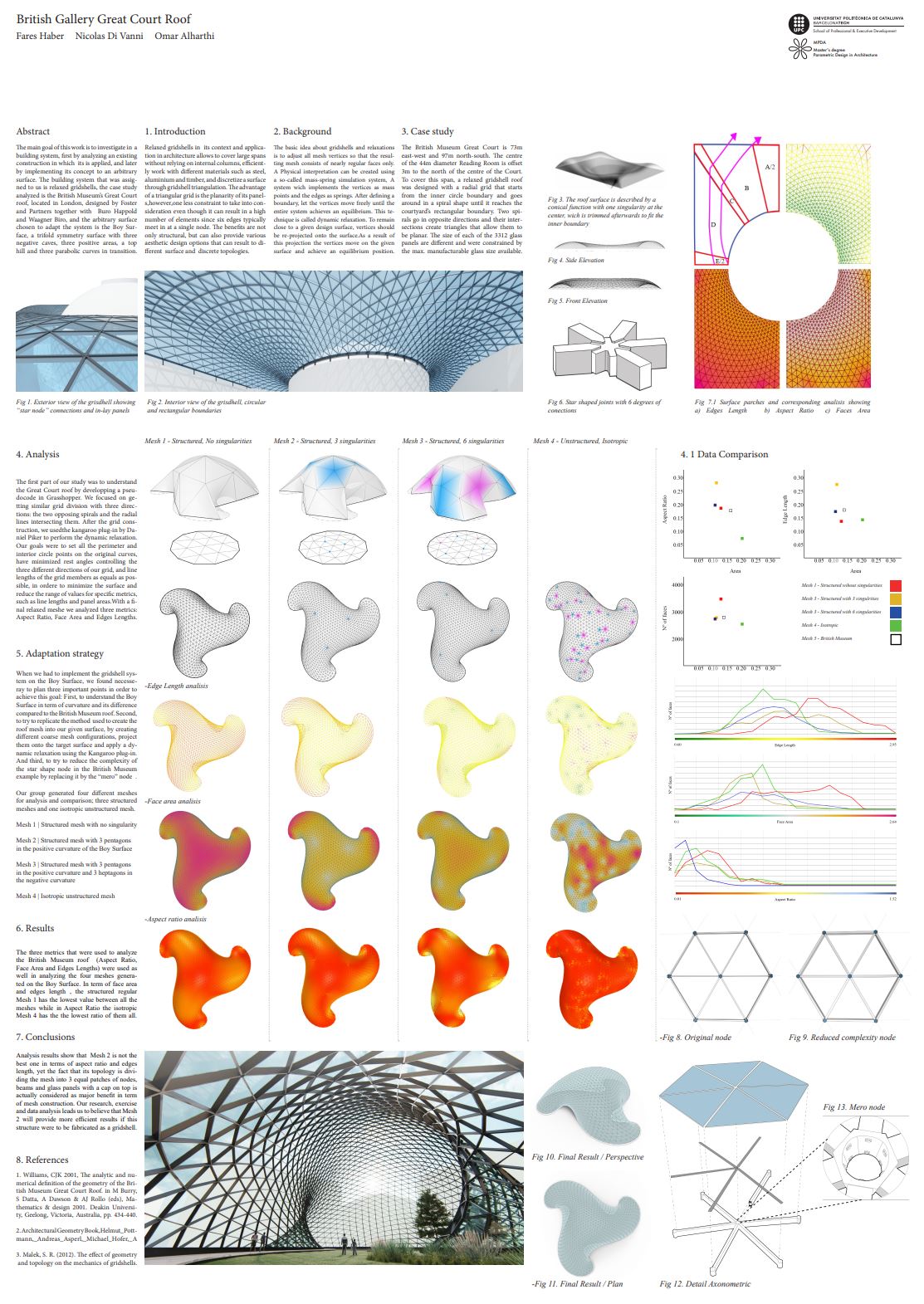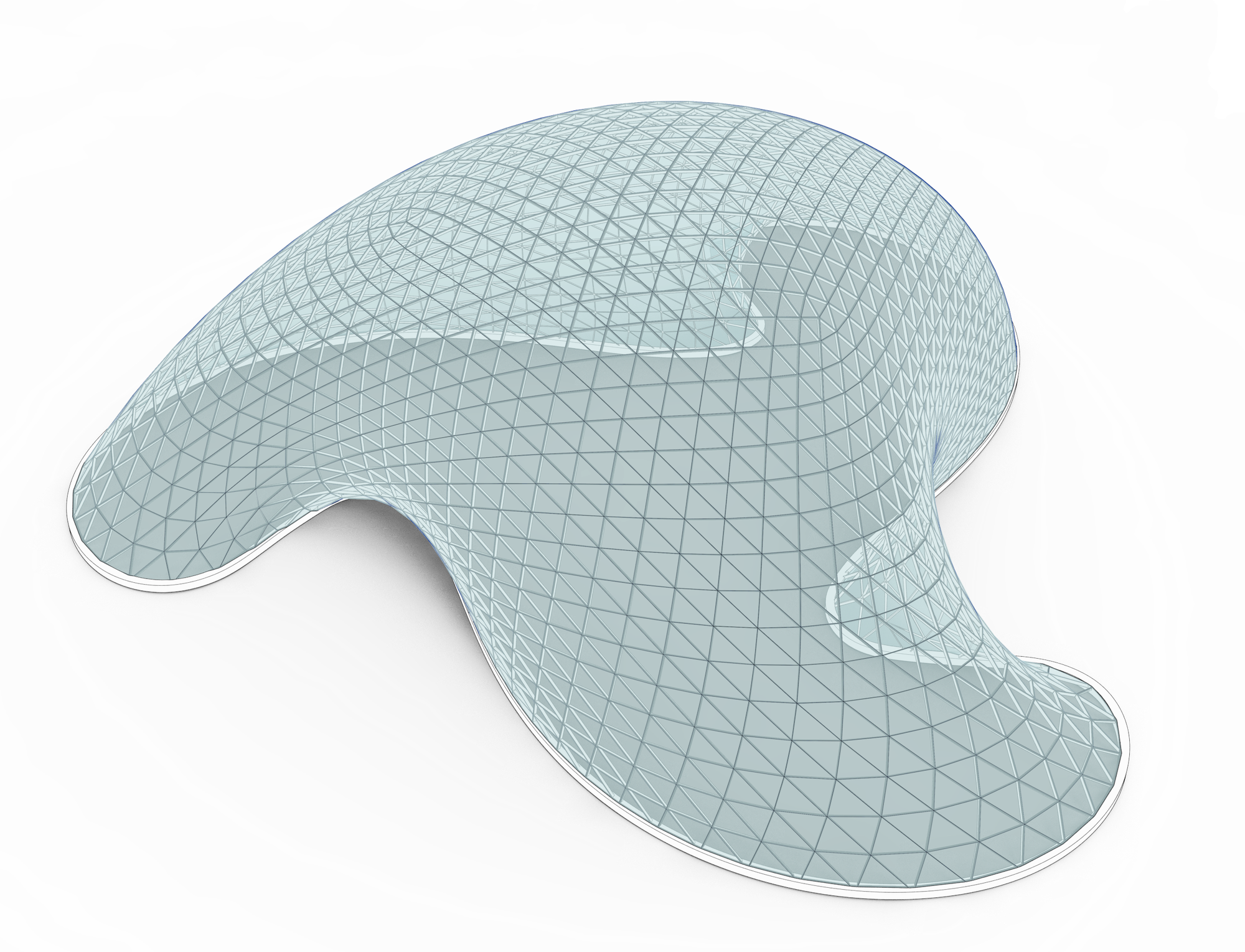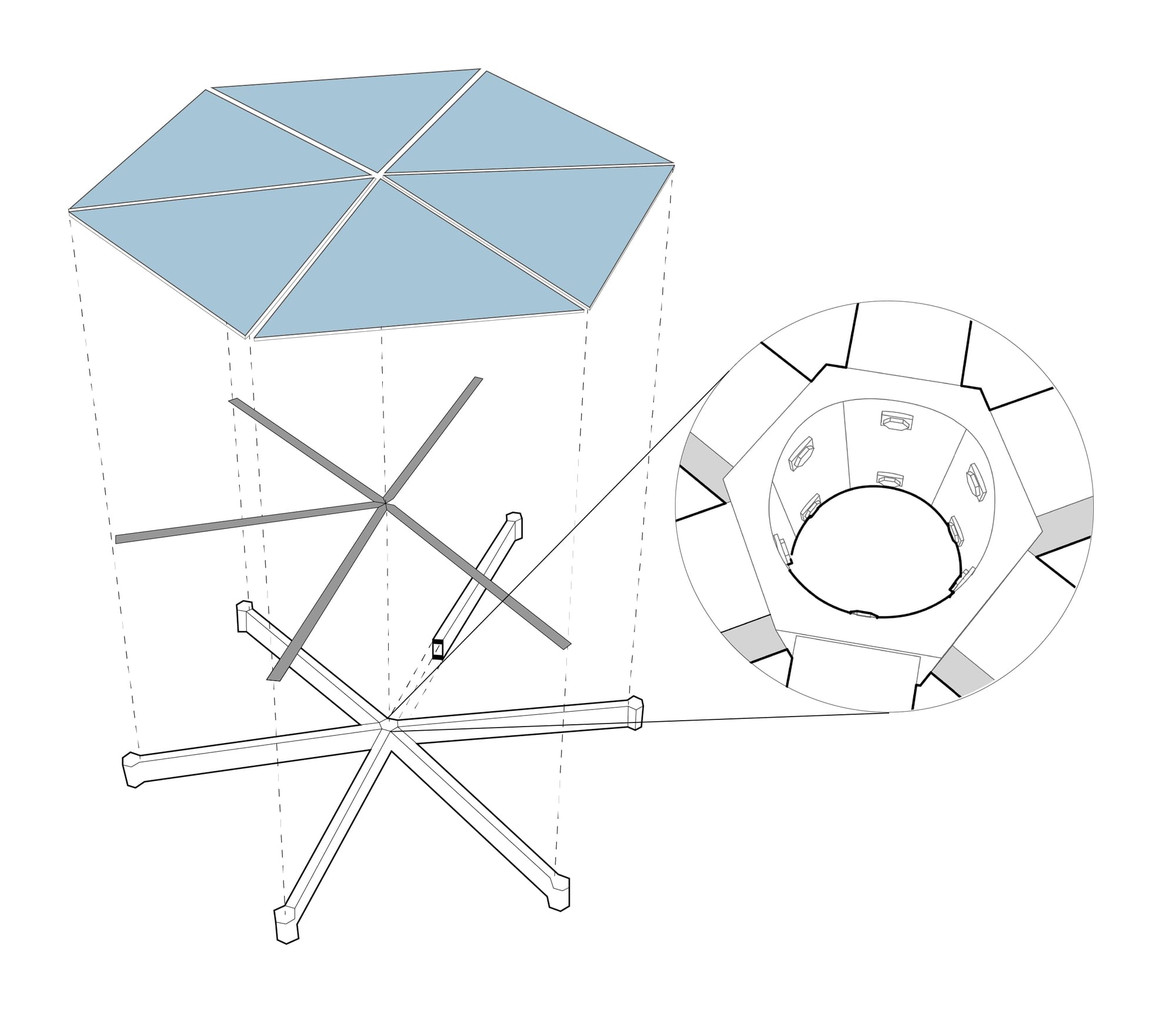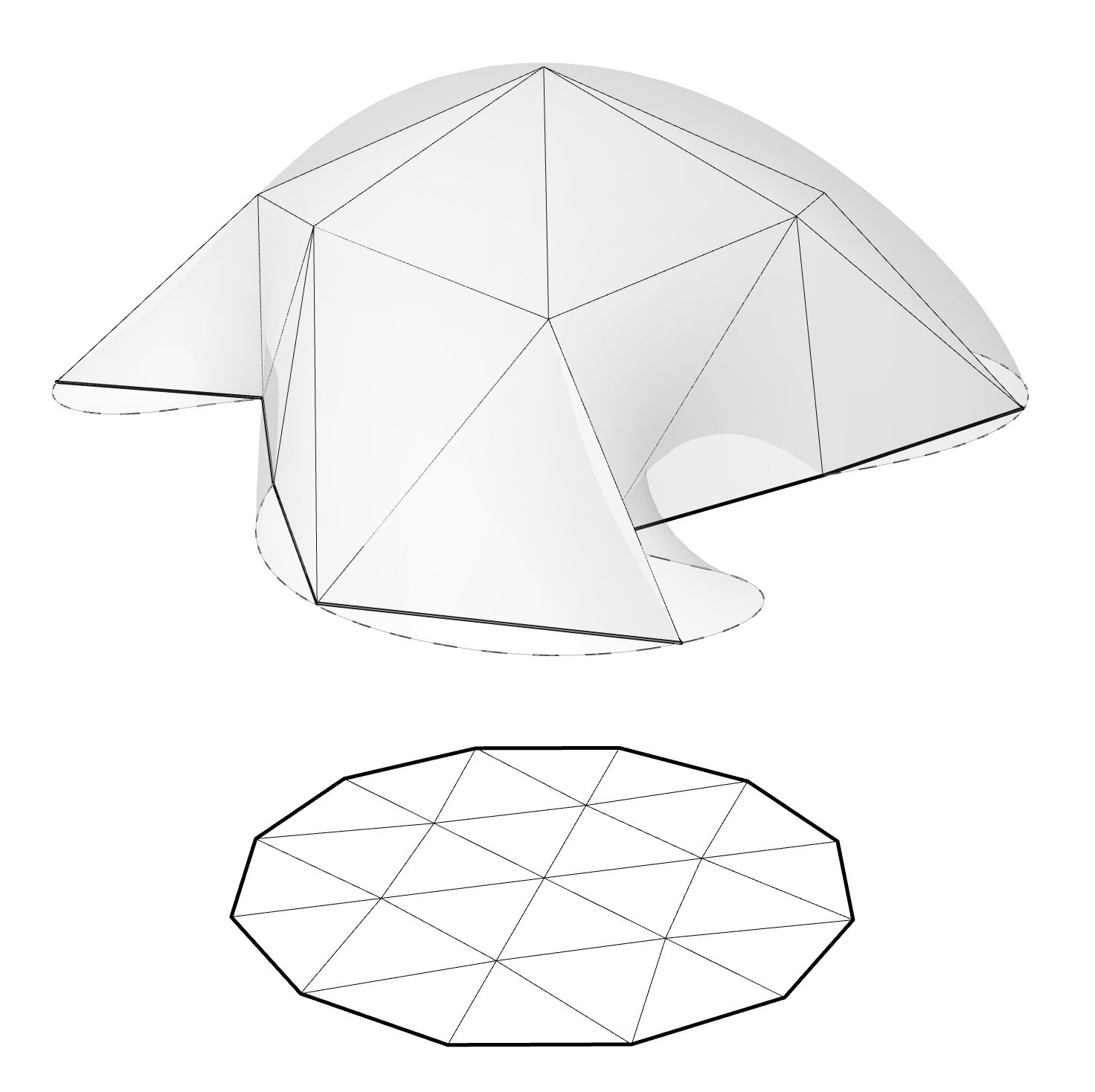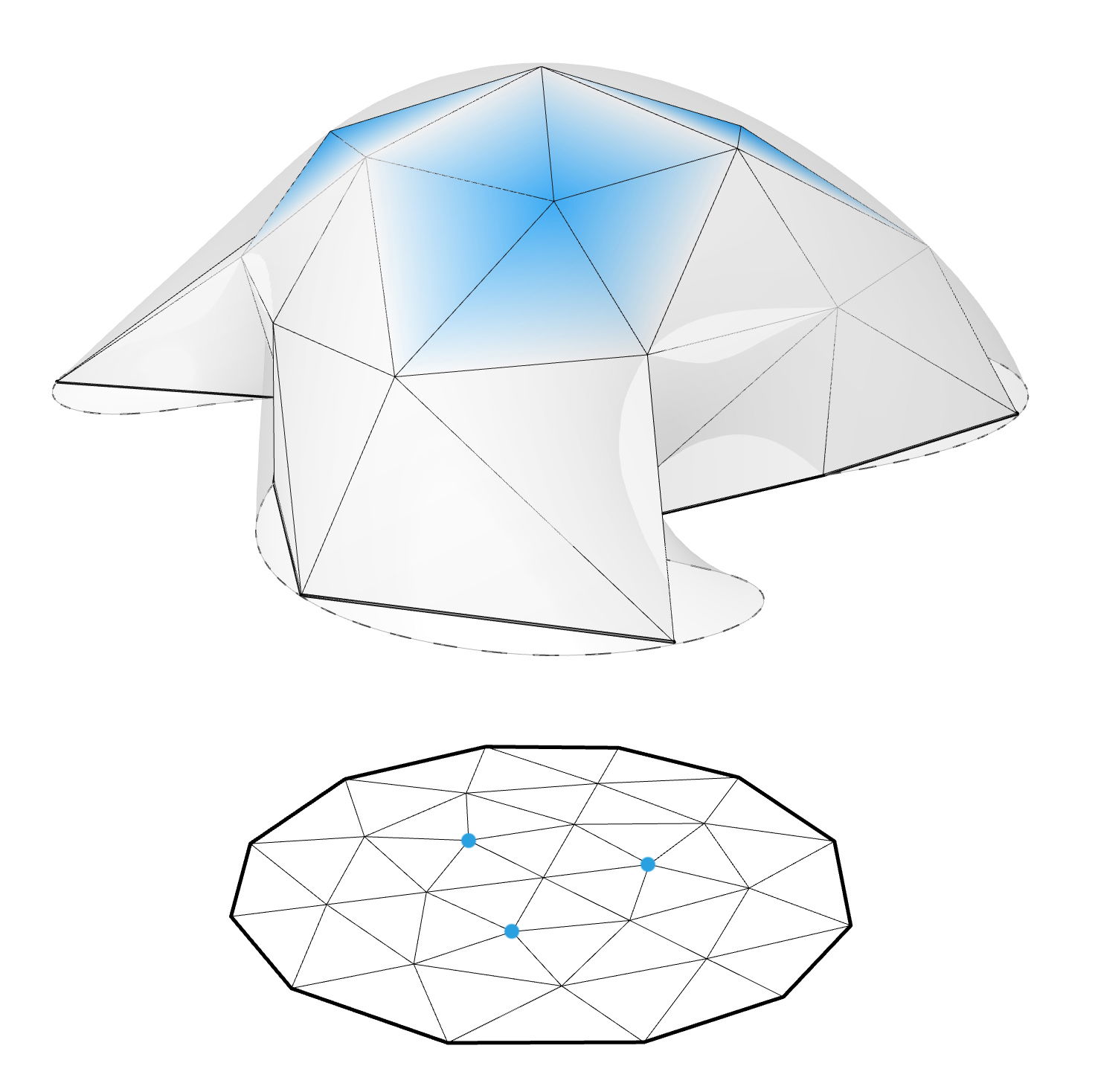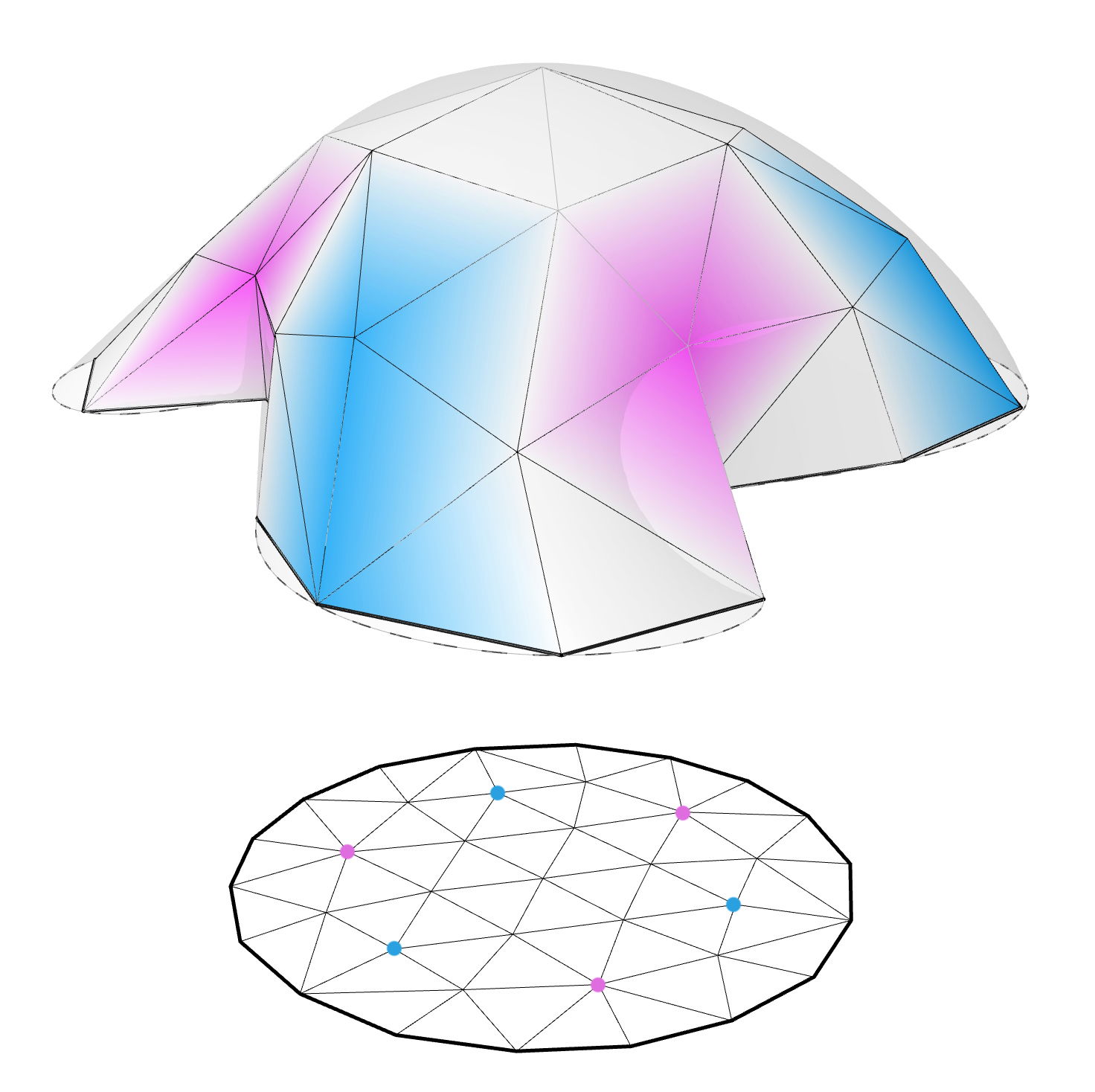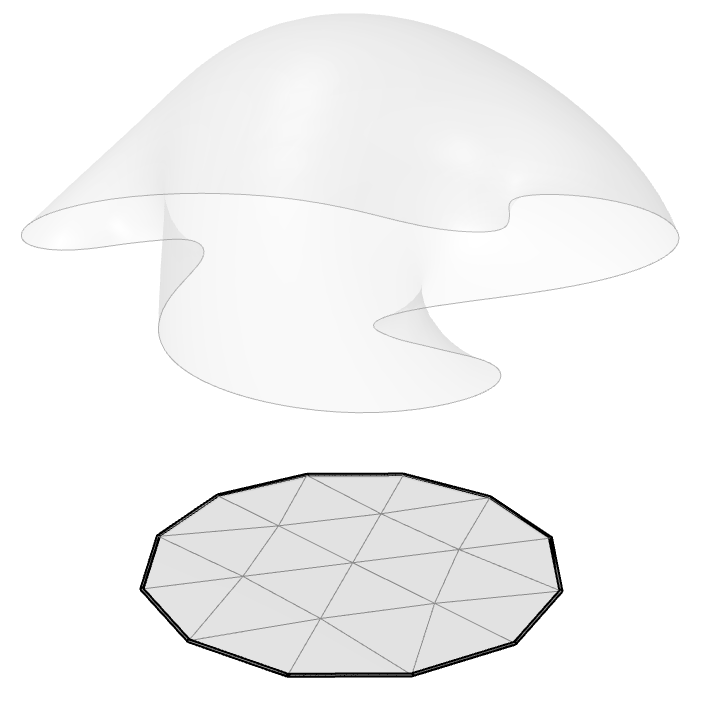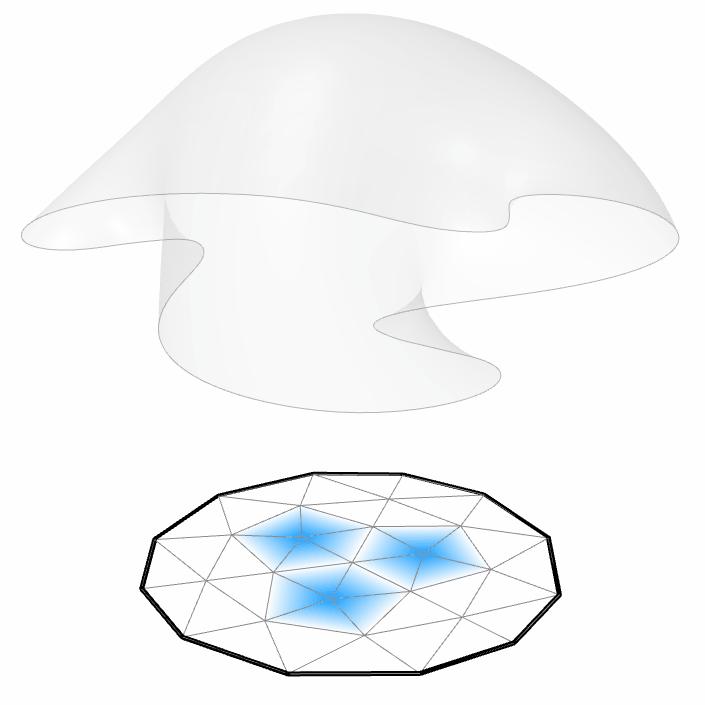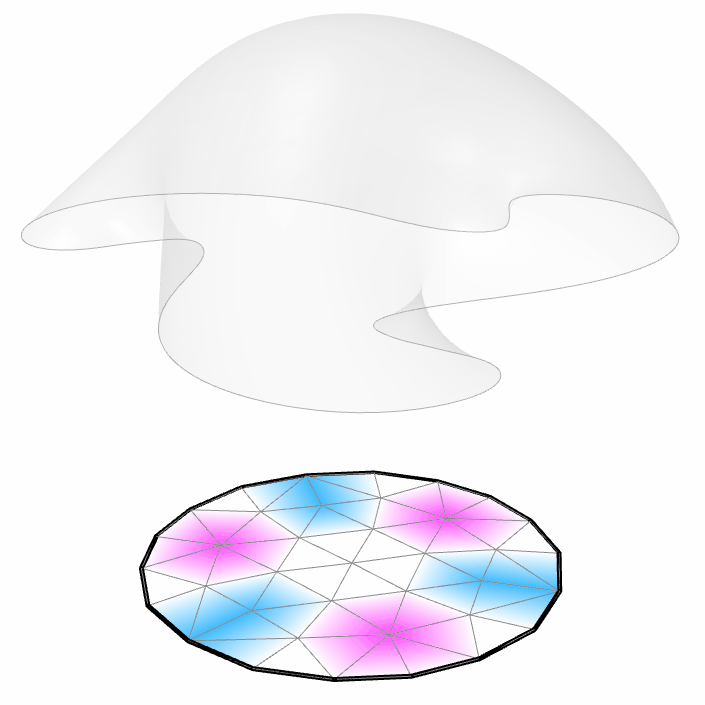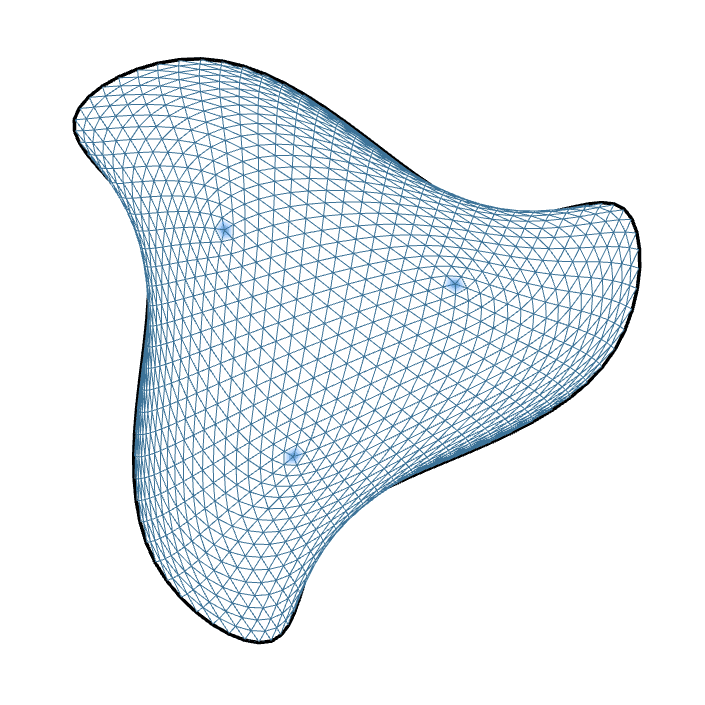British Gallery Great Court Roof- Case Study, Master's Studio1 Final
Case Study in collaboration with- Fares Haber, Nicolas Di Vanni
ABSTRACT The main goal of this work is to investigate in a building system, first by analyzing an existing construction in which its is applied, and later by implementing its concept to an arbitrary surface. The building system that was assigned to us is relaxed gridshells, the case study analyzed is the British Museum’s Great Court roof, located in London, designed by Foster and Partners together with Buro Happold and Waagner Biro, and the arbitrary surface chosen to adapt the system is the Boy Surface, a trifold symmetry surface with three negative caves, three positive areas, a top hill and three parabolic curves in transition RESULTS The three metrics that were used to analyze the British Museum roof (Aspect Ratio, Face Area and Edges Lengths) were used as well in analyzing the four meshes generated on the Boy Surface. In term of face area and edges length , the structured regular Mesh 1 has the lowest value between all the meshes while in Aspect Ratio the isotropic Mesh 4 has the the lowest ratio of them all. CONCLUSION Analysis results show that Mesh 2 is not the best one in terms of aspect ratio and edges length, yet the fact that its topology is dividing the mesh into 3 equal patches of nodes, beams and glass panels with a cap on top is actually considered as major benefit in term of mesh construction. Our research, exercise and data analysis leads us to believe that Mesh 2 will provide more efficient results if this structure were to be fabricated as a gridshell.
